3.06.2019

7Patricia Steere broadcasts her live YouTube show “The Flat Earth and Other Hot Potatoes" from her Houston home on Aug. 2, 2017.
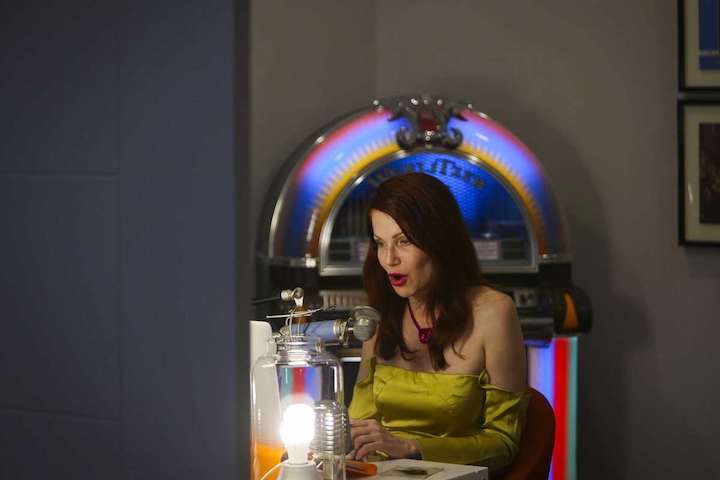
Patricia Steere broadcasts her live YouTube show “The Flat Earth and Other Hot Potatoes" from her Houston home on Aug. 2, 2017. Her YouTube channel boasts 13,000 subscribers. She says she “doesn’t participate” in politics, believes global warming and gravity are both lies, questions whether nuclear bombs really exist, decries chemtrails, has
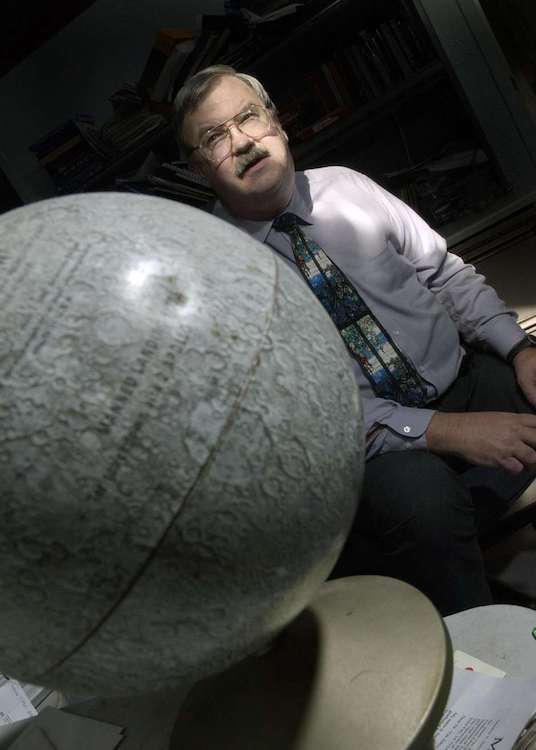
Author James Oberg poses in his home Nov. 20, 2002, in Dickinson, Texas, beside a commemorative globe marking the first landing on the moon. NASA hired the former rocket scientist to write a minibook refuting those who claimed the 1969 Apollo moon landings were faked, but later killed the deal following a rash of bad publicity.
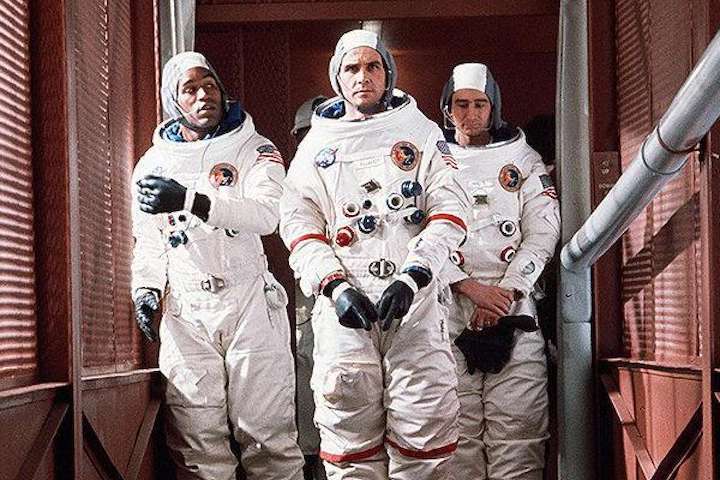
Actors O.J. Simpson, James Brolin and Sam Waterston star in "Capricorn One," movie about a fake space mission.Photo: Warner Bros. 1977
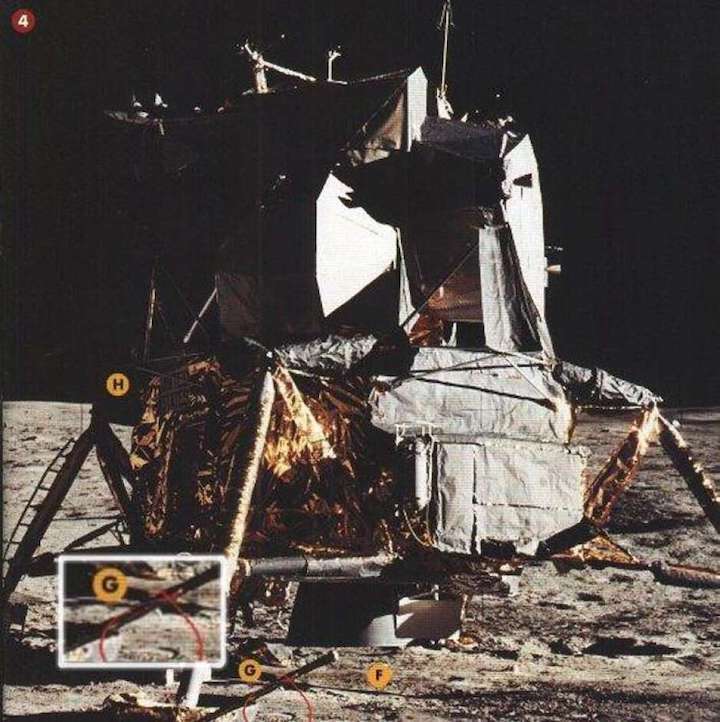
Some folks believe man never set foot on the moon, and that all the pictures that the Apollo astronauts sent back — including this photo of a lunar excursion module — were faked.
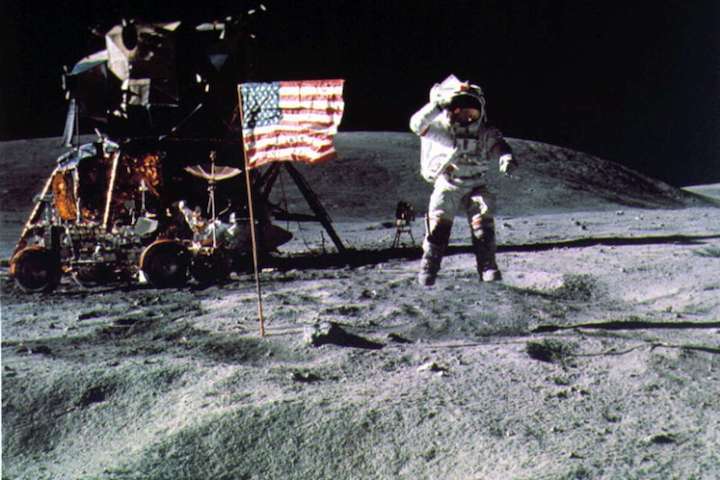
Astronaut John Young, commander of the Apollo 16 lunar landing mission, leaps from the lunar surface as he salutes the American flag on May 1, 1972. Some people still think the moon landings were a hoax.
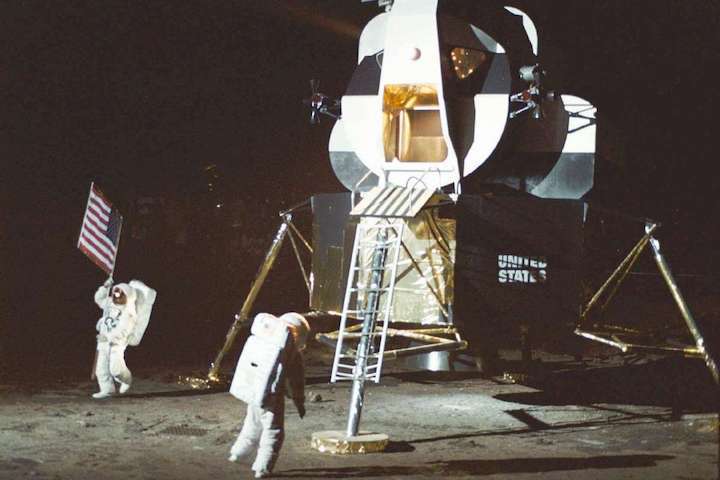
Actors reenact the moonwalk of astronauts Neil Armstrong and Buzz Aldrin on a model of the lunar surface at the U.S. Space and Rocket Center, in Huntsville, Ala. on July 18, 1999 during a program commemorating the 30th anniversary of the first moon walk.
Buzz Aldrin had had about enough. He’d flown in combat, earned a doctorate degree, and walked on the moon, taking a bounding leap into the future on the cold and dusty lunar surface. But still there were naysayers.
So when a pesky conspiracy theorist named Bart Sibrel ambushed him one day in 2002 outside a Beverly Hills hotel with accusations and impudent questions — Why don’t you swear on the Bible that you walked on the moon? — he did what any red-blooded, moon-walking astronaut named Buzz would do: he clocked his nosy questioner in the face.
There’s still grainy, wobbly footage of the contretemps on YouTube — footage that, incidentally, no one claims is faked. But as bizarre as it is watching the aging space voyager cold-cock a man barely half his age in public, the point of their contention is one that still survives: Polling shows roughly one in 20 people do not believe the moon landing really happened.
“It has been pretty much consistent that there has been this very tiny group of people,” said former NASA historian Roger Launius, “who discount the moon landing, who don’t think it happened.”
The skepticism, he said, began as early as 1969, almost as soon as Aldrin planted the planted the pole of an American flag on July 20, 1969 in the lunar surface with enough force to make it vibrate and prompt questions about the appearance of a breeze in an airless environment.
That year, New York Times writer John Noble Wilford uncovered an early crop of moon landing deniers at a Windy City saloon, already claiming the entire thing was a hoax.
“Any event worth a line in the history books invites skepticism,” he wrote in the opening sentence of his Dec. 17 column. “A few stool-warmers in Chicago bars are on record as suggesting that the Apollo 11 moon walk last July was actually staged by Hollywood on a Nevada desert.”
Skeptics and deniers
That narrative persists today, and the arguments have hardly changed. Skeptics still want to know why the U.S. flag appears to be waving in the wind, why they can’t see stars in the sky and why mankind has not been able to repeat the high-tech feat in decades.
Often, Launius said, moon landing deniers posit that the U.S. always intended to put a man on the moon but then got behind schedule, realized they couldn’t and lied their way out of it with the help of willing astronauts and a sound stage.
“The moon landing — for those who really have the eyes to see and the willingness to get over the patriotism — it dies a death of a thousand cuts,” said Patricia Steere, a longtime lunar landing skeptic who lives in the Heights. “If you look into it deeply, you’ll see so many things, and I’m not talking about shadows or a flag flapping in the wind. Those are red herrings; I’m talking about how much money was taken and what we have to show for it.”
To some experts, moon landing denials and other off-beat beliefs are more about psychology than facts. According to Launius — whose latest book, “Apollo’s Legacy,” features a chapter on moon landing deniers — there a few discrete types of lunar landing doubters.
“The first type is the folks who are technologically naive,” he said.
His own grandfather, a rural Illinois farmer who always viewed the tractor as a “passing fad,” fell into that category, refusing to believe man set foot on the moon all the way up to his death in 1984.
Then, there’s the people who simply don’t trust anything the government says. There’s the crowd that relishes the sense of lording superior knowledge over uninformed commoners. And, there are those who — like Sibrel — rely on their outspoken skepticism to make a buck.
‘Yes, we did’
To the people behind actual space travel, it can all be a bit annoying — even when it doesn’t end in fisticuffs.
Victor Murray, who last year celebrated his 50-year work anniversary at NASA’s Johnson Space Center in Houston, finds it incredibly frustrating when people say the moon landing was faked.
“I brushed moon dust off the spacesuits after Neil (Armstrong) and Buzz came back from the moon,” he told the Houston Chronicle in September. “That wasn’t faked.”
For the most part, NASA ignores the skeptics. But in 2001 officials made a rare foray into the fray, with a simple post on their homepage: “Yes, we did.”
Generally, though, ignoring the naysayers may not make them go away, and Launius instead suspects they could grow in number.
“The more time passes and the fewer people remember the moon landing,” he said, “the more people will probably question it.”
To Steere — who also believes the earth is flat and hosts a YouTube show dedicated to the topic — that’s all OK. The more skeptics, the better.
But please, she says, don’t call her a moon landing denier. She doesn’t like labels.
“I’m just a person,” she said, “that’s looked and found evidence.”
Quelle: Houston Chronicle
